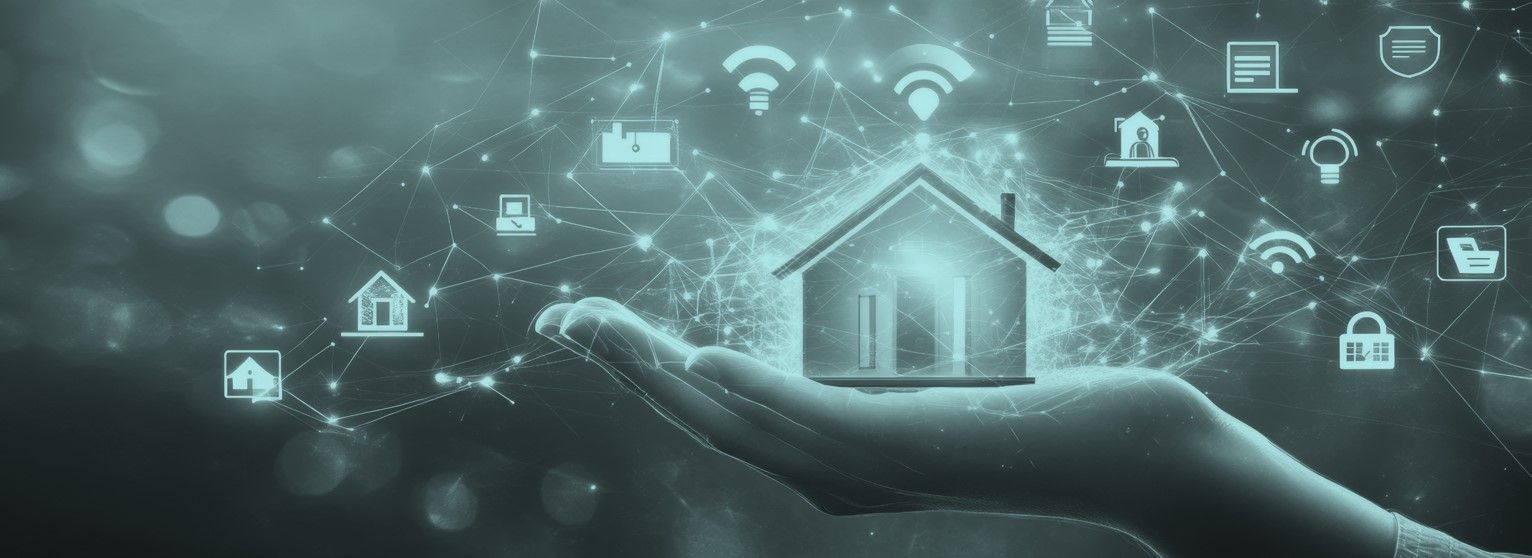This Chimni blogpost by Nigel Walley was used as a basis for a feature by Carol Lewis in the Sunday Times Property Section in October 2020. See here.

A friend recently showed me a CCTV app connected to a home camera with a startlingly clear image of a kitchen. However, it wasn’t the clarity of the picture that I found so shocking. It was the fact that it wasn’t actually my friends house that we were peering into. It was one he had sold three months previously.
I pointed out that, as well as being creepy, there was probably a law against what we were doing. He responded that he had never been asked about apps, systems or passwords during the conveyancing process when he sold the property. They buyer wasn’t interested in digital or tech. So he left behind a box of old paper documents and walked away with the home’s complete digital life.
This idea of a home’s ‘digital life’ would have meant nothing five years ago as data and digital tech were a minor aspect in how we manage our homes. This is now changing. Online accounts, passcodes, apps and other digital assets create a fog of connected data around our homes. Ownership of this data is not well defined and this problem becomes most obvious now when a home gets sold. At Chimni we break down this mess of digital activity into at least three types of digital ‘asset’ that need to be considered when buying or selling a home
• Online accounts for services
• Online accounts attached to hardware
• Data in long-term records
Online Accounts
The least controversial is the explosion in online accounts for services that used to be billed monthly by paper. Online accounts for utilities, insurances, service contracts etc have become standard for many homeowners. For the most part these are non-transferable, personal contracts with a financial obligation that a homeowner can be expected to terminate when moving. They don’t constitute a digital ‘asset’.
However, they increasingly leave a data footprint that has power and value as we begin to look at things like a home’s energy performance. A utility holds data that can tell you about energy use in and around your home. They probably have this data stretching back before you owned it. This used be held in closed computer systems that made it unshareable. Smart meters have ushered in a world where these data sets are now held as cloud data, and are share-able and machine readable. Chimni believes that these data records constitute a ‘digital asset’ linked to the home and we need to clarify who owns and can access them.
There are also a growing number of organisations like Local Authorities who are asking for a nominated account holder by property and only allow a single log-in per address. If these log-ins are for essential services, they also have to be viewed as a digital asset of the property. They either need closing down prior to exchange or details need to be passed on to new owners at exchange. But unless they are specifically called out in the conveyancing process this is not going to happen.
Online Accounts and Apps Attached to Hardware
The second group of potential digital assets are more problematic. Online accounts and support apps attached to hardware like the CCTV example, are a growing feature of the ‘Internet of Things’.
Systems like British Gas’ ‘Hive’, or Google ‘Nest’ began the mass adoption of these ‘home management’ apps. Newer products like Ring doorbells, CCTV and even lighting systems now come with control apps with remote control capability. Unless these are transferred at sale, a vendor can walk away with what is effectively the operating system for a home.
The current Law Society TA10 form already lists items like boilers and doorbells, and offers vendors the chance to leave a ‘comment’ against each item. At a stretch this could be interpreted as a chance to offer up the digital log-ins and app details. The new Buying & Selling Property Information (BASPI) form asks a homeowner to confirm that they “will leave all paperwork relating to any guarantee or warranty at the property” when they move out.
The word ‘paperwork’ is problematic here, as increasingly white goods, and other electrical fixtures and fittings provide digital (ie PDF) not paper documents. In fact the idea of a ‘document’ of any form is not long for this world, as apps and online FAQs makes the idea of a ‘document’, even a digital one, redundant.
At Chimni we believe that we need the process to be more explicit and proscriptive about the treatment of digital accounts in the sales process. The conveyancing process needs to specifically recognise the digital component of many physical devices.
If a physical device controlled by an app is left in place by the vendor, it needs listing out in the TA10 or BASPI with a specific question as to the nature of the apps & controls. The conveyancing process needs to specifically recognise the digital component of many physical assets and ensures it requests handover of related digital materials, keys, passwords etc. The industry needs to agree a workable basis for this handover process. It needs the same status in the process as the ritualised handing over of the keys. More importantly, a vendor should be made to guarantee they have cut all digital ties with the property.
Online Records
The last of the three types of digital asset is the most ephemeral but may end up the most problematic. This is the difficult issue of digital data relating to a property held online by the homeowner.
Until recently, most information collected for or about a property was held in paper form or, like utility data, in closed computer systems. Increasingly our homes have a life on the web. The explosion of publicly accessible data about our homes has occurred at a time when various government bodies are also calling for better record keeping about construction and performance.
The Hackitt Report, after the Grenfell Tower tragedy called for all homes to have a ‘golden thread of digitally held information’. The recent report on housing’s impact on the UK’s Carbon NetZero targets has called for all homes to have a ‘Whole Home Retrofit Plan’ and for it to be mandated, like an EPC, at sale or remortgage. There are other government departments calling for construction ‘materials records’ to be kept and made available online, and for rental properties to have a digital MOT document publicly available. None of the people calling for these records are clear about who should hold or manage these new data sets or what format they could be shared in. But they add up to significant new digital records relating to our homes. The property logbook providers, including Chimni, obviously believe that we can provide a solution to collating and managing these data sets on behalf of the homeowner.
Logbooks like Chimni are attempting to create a format for digital records that can hold all digital information on or about’ a property. But what has yet to be resolved is the asset status of these records when it comes to selling a property. It is our contention that these records, like the other digital assets mentioned, form a ‘data asset’ that needs recognition.
One of the dramatic downsides of the Government’s decision a decade ago, to dematerialise deeds, was that vendors no longer felt compelled to pass on these historic documents to the new owners. It sometimes happens, but there is no compulsion even if the vendor can find them. If we want Dame Hackitt’s Golden Thread of info to have a material impact, then these new digital records have to have the same requirement to be handed over that deeds used to have. We cannot have homeowners failing to pass on accounts and digital records if they are to have any meaning.
Property logbooks are being heralded as one part of the solution for tidying up the current chaotic buying and selling process. The main focus of this thinking is on upfront data at the start of the process. However, badly managed digital assets could add to the confusion at the end of the process. Giving logbooks a legal status could avert this.
This problem is only now emerging. But the one thing we can be certain of is that the data around a property will continue to grow in scale and variation. We currently have time to put remedies in place. But the longer we wait, the harder it will be.
End.


